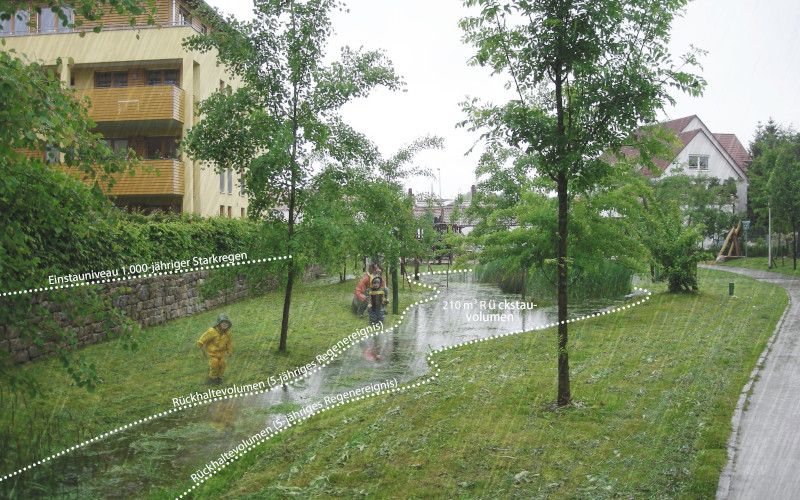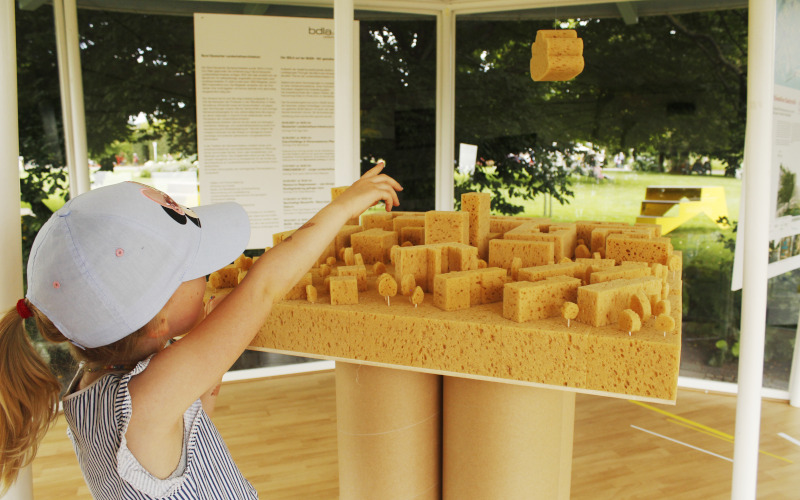Preparing cities and regions for climate change
Climate change is one of the greatest challenges of our time. Heavy rainfall events and hot spells are on the rise. Floods, droughts, forest fires and overheated cities are the consequences.
Parallel to climate protection, it is becoming increasingly important to protect cities and the countryside from the negative consequences of climate change.
We landscape architects shape the climate. With open spaces that produce fresh and cool air, with infiltration areas, green roofs and facades, biotopes and ecological measures.
Prof. Stephan Lenzen
President of the bdla
Climate adaptation measures work directly on site and bring immediate improvements.

Climate adaptation: more green, more cool air for the neighborhood
Courtyard greening, pocket parks, or large-scale park and water features: these are all critical components of climate adaptation.
An 80-year-old linden tree has an annual cooling capacity of about 200 refrigerators.
Prof. Dr. Thomas Rötzer
Chair of Forest Growth Science, TU Munich

The effects of climate change can be reduced through targeted strategies and measures. And the fields of action are broad: agriculture or forestry, nature conservation, health, tourism, urban planning, the design of green spaces and residential areas, or the energy industry.
Landscape architects develop innovative concepts and plan appropriate measures.

Rainwater collection and targeted use: Example Schwammstadt
A more recent approach is the so-called Schwammstadt concept: Rainwater is no longer discharged into the sewer system or infiltrated as quickly as possible, but is kept and stored on the surface.

In this way, urban trees and green spaces can be supplied with water, which in turn evaporate the water and thus cool the surrounding area.
Renaturation and adaptation measures also make an effective contribution to climate protection. The rewetting of peatlands, for example, binds carbon dioxide in the long term.

Further information and example projects
In an online exhibition, the bdla shows climate adaptation measures at all planning levels:
Further examples, working aids and statements on climate-adapted planning:
We are looking for the next generation
Climate adaptation is a huge task - and time is pressing.
We invite young people to study landscape architecture and work with us on the green future of our cities and regions.

- Latitude: 0
- Longitude: 0


